Chapter 7
Creating a Remarkable Presence on Facebook with Content Marketing
IN THIS CHAPTER
 Understanding why content matters
Understanding why content matters
 Posting with a purpose
Posting with a purpose
 Responding to your Facebook community
Responding to your Facebook community
 Using video to engage more customers
Using video to engage more customers
In the age of Facebook, businesses are realizing that in addition to the products they sell, information is one of their core offerings. In fact, information may just be the most important one. Facebook marketing starts with giving valuable and interesting information to your customers; information is the new marketing currency.
This is why a content strategy is probably the most important strategy for marketing on Facebook. A content strategy consists of the plan, goals, and tactics you’ll use to decide what content to post on your Page, when to post it, and how to measure its effectiveness.
In this chapter, you find out why content is important and how to create remarkable content. You also see how to reply to comments people post to your Facebook updates.
Understanding How Content Marketing Works on Facebook
To understand how content engages Facebook users, you must understand the News Feed. In Figure 7-1, you can see that updates and stories from a friend of one of the authors and Pages that he has liked are displayed on his News Feed — the primary place where Facebook users interact with friends and brands.
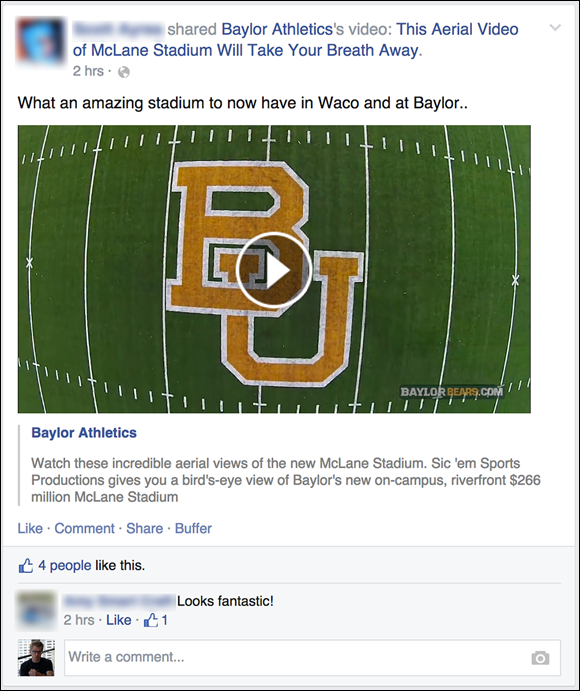
FIGURE 7-1: Facebook users view updates from friends and Pages primarily in their News Feed.
Understanding the difference between your website and your Facebook Page
When you publish content on your website, visitors must go to that specific web page (a single location) to view that content. This content can be a simple web page or a blog post.
But when you publish a Facebook update on your Facebook Page, fans don’t view your story in a single, static location; they view it in their News Feed (shown in Figure 7-2), where it must compete for attention with other businesses (Facebook Pages) and friends. In fact, less than 5 percent of a Facebook Page’s fan base actually visits the Page. All the action (liking, commenting, sharing) exists in the News Feed.

FIGURE 7-2: Content on Facebook is consumed differently from content on a traditional website.
To reinforce the fact that the News Feed is home base for Facebook users, a comScore Mediabuilder study also shows that Facebook users spend 27 percent of their time in the News Feed, as shown in Figure 7-3.
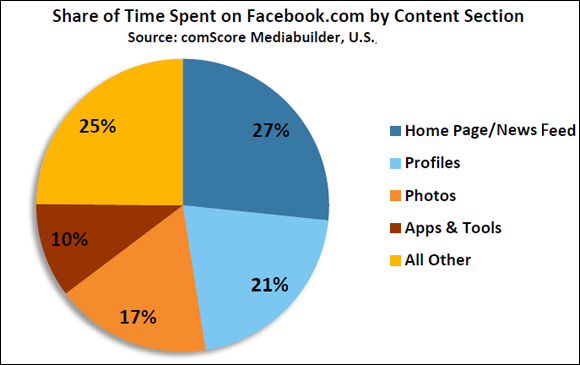
FIGURE 7-3: Users spend 27 percent of their total time on Facebook on their News Feed.
There are three reasons that Facebook users make the News Feed their home base on Facebook:
- The home page: The News Feed is the first thing all Facebook users see when they log in to Facebook, enabling them to view and engage with updates from friends and Pages they’ve liked without having to visit individual personal Timelines or Pages.
- A central place to share: At the very top of the News Feed, Facebook users can post photos, videos, status updates, and links.
- Filtering: In their News Feed, Facebook users can choose to filter content by friend lists and interest lists. They can choose to view only stories from close friends, for example. When they filter by friend lists, they still see stories about your Page that friends on that list have created (by liking or commenting on posts, liking your Page, and so on).
Understanding how people scan content
We all have a high school friend (call her Maria) who found us years later on Facebook and who now posts firehose barrages of pictures, videos, and comments about her latest crochet creations to our Facebook Page. Because we’re nice people, we don’t want to offend her by unfriending her. Instead, over time, we’ve tuned out Maria’s Facebook updates. The ability to tune out undesirable messages isn’t new, but it’s a factor that you need to consider when publishing content for any channel (website, email, direct mail, Facebook, and so on). Instead of reading a 1,000-word article on your website, your prospects will probably just
- Scan the title.
- Scan the subheadings.
- See whether anyone has recommended your article.
- Scan the first paragraph.
- Scan the last paragraph.
- Look at the pictures.
How people filter content on Facebook includes these same strategies, but instead of viewing a single web page with a few related articles (that is, your website), they’re scanning photos, videos, links, and status updates about unrelated topics from both friends and Pages. Also, there’s the added pressure of all this content getting pushed farther down in the News Feed with every passing moment. You can begin to see that being concise, relevant, and interesting are key success factors in getting the attention of customers and prospects on Facebook.
Understanding how Facebook’s News Feed algorithm affects visibility on Facebook
Just because someone becomes a fan of your Page doesn’t mean that she’s seeing your Page content in her News Feed. This fact bears repeating: Someone who becomes a fan of your Page doesn’t automatically see your Page content in her News Feed. A sneaker company that attracts new fans in exchange for a 20 percent discount but fails to post updates that are interesting and engaging to fans will find a hard time nurturing and growing a vibrant fan base. Its Page updates will disappear from its fans’ News Feeds because of the Facebook News Feed algorithm.
The News Feed algorithm is ever changing. It’s what Facebook uses to determine how content ranks within a user’s News Feed. In general, updates that aren’t interesting or useful to Facebook users likely won’t appear in their News Feeds. In 2018, Mark Zuckerberg announced that Facebook’s algorithm will favor friends and family, thereby pushing Page content out of view.
In general, to determine whether a Page post shows up in the News Feed, Facebook’s algorithm considers these main factors:
- Whether you’ve interacted with a Page’s posts before: If you like every post by a Page that Facebook shows you, Facebook shows you more posts from that Page.
- Other people’s reactions: If everyone else on Facebook ignores a post or complains about it, the post is less likely to show up in your News Feed. Conversely, if a post has an extraordinarily high rate of engagement, Facebook considers the post more authentic and pushes that update to more of your Facebook Page fans.
- Your interaction with previous posts of the same type: If you always like photos, there’s a better chance that you’ll see a photo posted by a Page.
- Complaints: If that specific post has received complaints from other users who saw it, or if the Page that posted it received lots of complaints in the past, you’ll be less likely to see that post.
- Popular videos: Facebook will display videos that are popular based on time watched and whether they were completed.
- Timely posts: If a topic is hot at the moment, Facebook will be more likely to display it in your News Feed immediately.
- Click-bait: Facebook is cracking down on click bait. Click-baiting occurs when a link is posted with vague or sensationalistic headlines that encourage people to click without telling them what they’ll see when they reach the advertised page. They don’t want you to see content in your News Feed that will waste your time.
The bottom line is that Facebook wants to make the News Feed useful to Facebook users so that they keep coming back. Return visits mean more advertising revenue for Facebook (its ultimate bottom line).
Understanding that Facebook users can hide all posts from your Page
Just because a user liked your Page doesn’t mean that he’s reading your posts. When a user sees your post in his News Feed, he can omit your posts from his News Feed but remain a liker of your Page. To do this, he simply clicks the three- dot sign on the right side of the page and is shown several options, including Hide Post. If the user clicks that option, he sees fewer posts like yours.
You can find out how many people (but not specific names) have hidden your Page’s posts in your Insights dashboard.
To view how many people have hidden your posts, follow these steps:
- Log in to Facebook, and visit your Page.
- Click Insights in the admin navigation menu.
- Click the Reach tab and scroll down to the Hide, Report As Spam, and Unlikes report (shown in Figure 7-4).
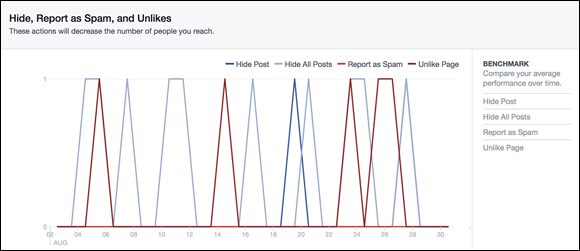
FIGURE 7-4: You can see how many people have hidden your Page posts in Facebook Insights.
Creating compelling content for your Facebook Page
According to the 2016 State of Digital Content from Altimeter (http://www.prophet.com/thinking/2016/10/state-of-digital-2016/), brands found Facebook (71%) and Email (62%) to be the most effective channels for generating engagement for their content. Creating, aggregating, and distributing information via your Facebook Page help build trust between you and your customers. If that information is off topic or irrelevant, however, it can weaken that trust. Being useful, authentic, and relevant is the key.
If you sell antiques, for example, don’t post about your fly-fishing trip just because it’s a hobby of yours. On Facebook, you can easily find out what sort of content your customers are looking for. You can always ask your customers directly about the types of content they want so that you can make your Page more useful to them.
Keep in mind that creating relevant content that resonates with your audience is part science, part art:
- On the science side is Facebook Insights, which is a set of metrics that quantifies how people interact with your content. If something works based on the response it receives, by all means produce more content similar to it. (Chapter 10 discusses Facebook Insights at length.)
- On the art side of the equation, your content strategy requires an element of creativity. Even if you simply repurpose other people’s content, such as by sharing another Page’s most popular updates (see Figure 7-5), you must be artfully selective to determine what’s worth sharing with your customers.
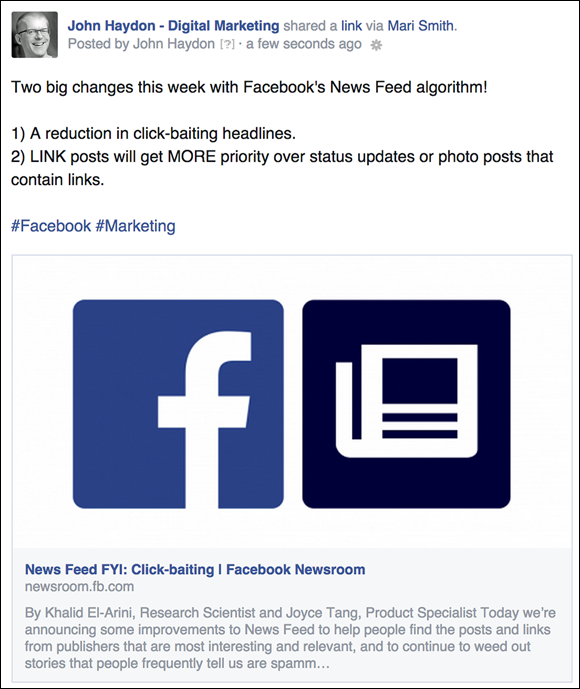
FIGURE 7-5: Pages can share updates from other Pages.
Knowing your audience
Before you can deliver content that’s relevant to your customers’ lives, you need to understand your audience. Who are these folks? What interests and motivates them?
Ponder these questions when deciding whether your content is on message and relevant to your audience:
- Does the content address your audience’s questions, concerns, or needs?
- Does it inspire or entertain your intended audience?
- Does it help users complete a specific task?
- Will it help influence a decision?
Figure 7-6 shows an example from Square that seeks to help its small-business customers increase sales.
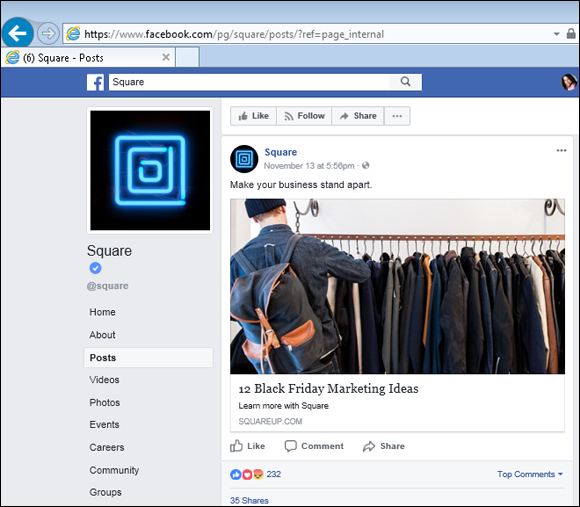
FIGURE 7-6: Square publishes useful updates to educate small-business owners.
Staying on message
According to the traditional marketing model, from awareness and knowledge come desire and action. With Facebook, however, the rules have changed. Everyone and everything is connected, so any engagement you do through your Page doesn’t go away.
After you post something on your Page, fans may take your advice, or they may pass on the videos you uploaded to others. Therefore, you have to maintain a common message or theme throughout all your updates to ensure that you always accomplish the goals you set for yourself in your Facebook marketing plan, whether those goals involve brand awareness, increasing sales, or both.
An easy way to stay on message with your Facebook fans is to develop a content calendar based on topics for each day of the week. An auto repair shop, for example, might post on the following schedule:
- Monday: Safe-driving tips
-
Tuesday: Do-it-yourself repair tips
Tell fans to ask questions in the comments.
- Wednesday: Discounts and specials
-
Thursday: Recommendations for weekend day trips
Get fans to share their favorite driving destinations as well.
-
Friday: Show and tell
Get fans to post pictures of their cool cars.
Defining Your Posting Goals
Compelling content doesn’t magically appear. It requires planning, creativity, and an objective. Content without a goal doesn’t help you sell more products, build awareness for your cause, or promote your brand.
Your content needs to align with the business goals of your organization. Some basic goals may include
- Driving traffic to your website
- Enhancing your brand
- Improving customer service
- Generating leads
- Increasing ad revenue
- Adding e-commerce to your online marketing efforts
If your content strategy includes incentives such as coupons, giveaways, and promotions, you need to translate that strategy into a very clear and straightforward call to action (or goal). You may have several converging goals behind your posts, such as to let people know about an event as well as provide an incentive for those who RSVP to attend.
The following section examines some motivational goals to consider when you publish content to your Facebook Page.
Getting Fans Engaged
Engagement is the name of the game on Facebook. By engagement, we mean soliciting a response or action from your fans. This action could be commenting on a post, liking something, contributing to a discussion topic, or posting photos and videos. You want fans to interact with your Page for several reasons:
- You can build a relationship with fans through dialogue and discussion.
- The more activity is generated on your Page, the more stories are published to your fans’ News Feeds, which drives more awareness of the original action and creates a viral marketing effect.
How do you get your fans to engage with your Page? The answer depends on your audience and the subject matter of your Page. Here are some helpful hints for encouraging fan engagement through your content:
- Show your human side. All work and no play makes for a very dull Page. People like to share the more human side of life. Many people take part in Take Your Child to Work Day or even Take Your Dog to Work Day, for example. If you participate in one of these events, post a picture of your child or pet and then add a note that they’re doing a great job of helping Mom or Dad at work. Ask your fans whether they’re taking advantage of this opportunity, and encourage them to post pictures as well.
- Ask your fans what they think. Be direct: Ask fans what they think of your organization, new product, or position on a topic. Fuddruckers – North Andover, a restaurant in Massachusetts, regularly asks its fans to share their thoughts on their favorite food (see Figure 7-7).
- Tell your fans how much you appreciate them. Don’t underestimate the goodwill gained by saying thanks. Thanking your fans for their questions or complimenting them on their comments can go a long way in social media circles. The clothing retailer Lands’ End is known for its exceptional customer service, and its fans aren’t afraid to tell everyone about it!
- Highlight a success story. Another tactic that appeals to vanity is highlighting a fan’s success. She’ll be sure to thank you for the attention, and your other fans will appreciate hearing about one of their own making good. Many companies on Facebook run a Fan of the Month promotion and foster engagement by soliciting entries.
- Share your tips and insights. People are always looking for information that helps them do their jobs better. Don’t underestimate your knowledge and what you have to share that’s valuable. Sharing helpful tips is some of the best engagement around. Social Media Examiner does a great job providing a steady stream of tips to its Facebook fans, as shown in Figure 7-8.
- Provide links to relevant articles and research. You don’t have to be a prolific writer to be valuable to your fans. By posting links to relevant articles, videos, resources, and research, you build your credibility as a content aggregator.
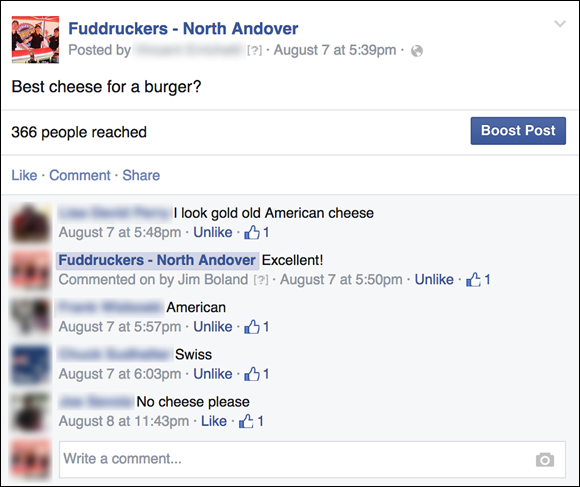
FIGURE 7-7: Fuddruckers asks fans about food preferences.
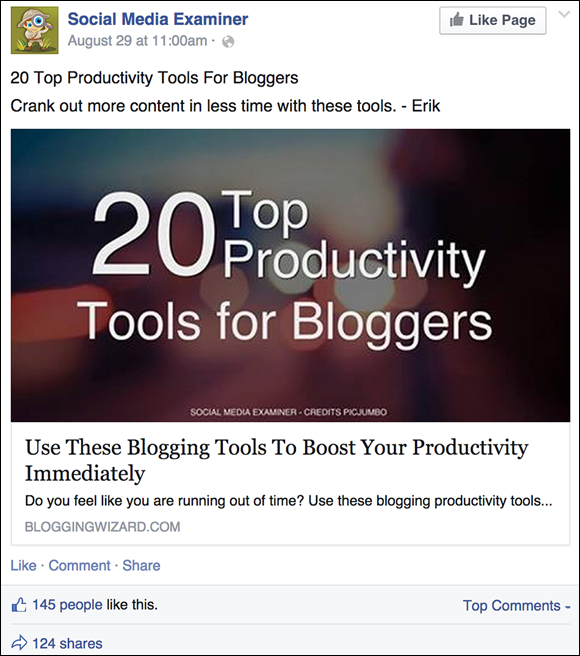
FIGURE 7-8: Social Media Examiner gives its fans a steady stream of tech tips.
Saving Time Creating Visual Content
Most marketers are finding that visual content is becoming more and more important to their overall content strategy. The challenge for many marketers is that creating compelling, interesting, and attractive visual content is very difficult. Following are a few recommendations for creating visual content quickly and cheaply:
- Canva (
www.canva.com): If you need to churn out visual content that’s beautiful (or at least branded), Canva is your tool. It has templates for Facebook covers, social media posts, posters, blog graphics, and more. - PicMonkey (
www.picmonkey.com): PicMonkey is an online editing tool that offers many of the basic features of Adobe Photoshop: cropping, resizing, adding text, and so on. It’s also very easy to use, and it’s mostly free. - Piktochart (
www.piktochart.com): What you’ll love about Piktochart is its wide variety of infographic templates and themes. Instead of starting from scratch, you’re starting with 75 to 80 percent of a final product. - Easel.ly (
www.easel.ly): This website features thousands of free infographic templates and design objects that you can use to create visual content. Like Piktochart, the site has drag-and-drop design elements. Base your content on existing templates or start from scratch with something original.
Understanding the Importance of Video Content for Marketing
“In five years, most of Facebook will be video.” Mark Zuckerberg uttered those words in 2014. As of 2017, that prediction was becoming a reality. Video is showing up across the Facebook platform. According to Socialbakers, video reached more fans in 2015 than any other kind of content on Facebook, and this is even more true in 2018.
So where can you post your marketing videos? Everywhere! Some of the places you can post videos include:
- Your Facebook Page cover
- Ads, both desktop and mobile
- Timeline posts, both desktop and mobile
- Facebook Stories
- Instagram Stories
- Live videos (streaming)
- 360-degree videos
Facebook makes uploading videos to these venues easy and provides Insight data so that you can evaluate your videos’ effectiveness (see Chapter 10). You can also control who sees your videos by adjusting the privacy settings.
After you have videos uploaded to your Facebook Page, you can access them for cross-posting and sharing from the Publishing Tools link at the top of your Page, as shown in Figure 7-9.
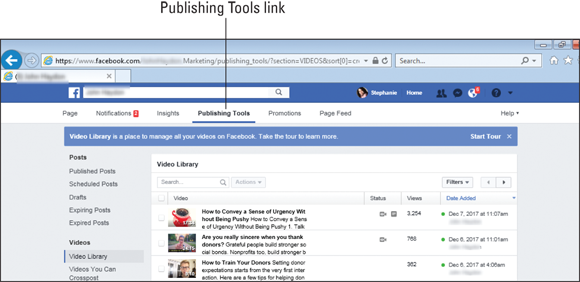
FIGURE 7-9: Accessing your Video Library from the Publishing Tools link.
 Content and conversations significantly contribute to making a conversion — getting a user to take a specific call to action, such as signing up for a newsletter or even buying your products.
Content and conversations significantly contribute to making a conversion — getting a user to take a specific call to action, such as signing up for a newsletter or even buying your products. Get fans to share their tips as well.
Get fans to share their tips as well.